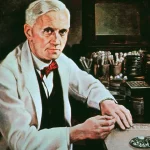How Does the Human Body Produce Voice and Speech?

The human body produces voice and speech through a complex process involving several anatomical structures and physiological mechanisms. Here’s a simplified overview of how voice and speech are generated:
1. Respiratory System: The process begins in the lungs, where air is inhaled and exhaled. The respiratory system plays a crucial role in providing the necessary airflow for speech production.
2. Phonation: The primary sound source for speech is the larynx, commonly known as the voice box. The larynx contains vocal folds (also called vocal cords) that can be brought together or apart. When you speak, air from the lungs passes through the space between the vocal folds, causing them to vibrate. This vibration creates sound.
3. Articulation: Once sound is generated in the larynx, it travels through the vocal tract, which consists of the pharynx, oral cavity (mouth), and nasal passages. The articulatory organs, including the tongue, lips, teeth, and palate, shape and modify the sound to produce specific speech sounds and articulate words.
4. Resonance: The vocal tract acts as a resonator, amplifying and filtering the sound produced by the vocal folds. The shape and configuration of the vocal tract can be adjusted to produce different speech sounds, such as vowels and consonants.
5. Pitch and Loudness Control: Muscles in and around the larynx control the tension and length of the vocal folds, affecting the pitch and loudness of the voice. Tensing the vocal folds creates higher-pitched sounds, while relaxing them results in lower-pitched sounds.
6. Prosody: Speech is not just about individual sounds but also includes the rhythm, intonation, and stress patterns that convey meaning and emotion. These aspects of speech, known as prosody, are controlled by varying the pitch, loudness, and timing of speech sounds.
7. Auditory Feedback: As we speak, we continuously monitor our own speech through auditory feedback. This feedback helps us adjust our articulation and intonation to produce clear and intelligible speech.
8. Language Processing: Finally, speech production is closely linked to language processing in the brain. The brain coordinates the selection of words, grammar, and the sequencing of sounds to convey meaning effectively.
It’s important to note that speech production is a highly coordinated process, and any disruption in the functioning of the respiratory, phonatory, or articulatory systems can result in speech disorders. Speech therapy and intervention can help individuals with such disorders improve their ability to communicate effectively.
In summary, the production of voice and speech involves the coordination of the respiratory system, vocal fold vibration in the larynx, shaping and modifying sound in the vocal tract, and the use of prosody and language processing in the brain to convey meaning and emotion through spoken language.





